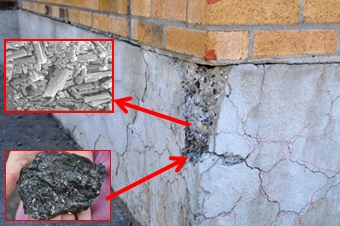Concrete damage due to oxidation of pyrrhotite-bearing aggregate: a review
DOI:
https://doi.org/10.21809/rilemtechlett.2021.138Keywords:
Sulfide minerals, pyrrhotite, oxidation, internal sulfate attack, diagnosisAbstract
Oxidation of pyrrhotite-bearing aggregates is one of the major causes of concrete damage in numerous buildings in Trois-Rivières in Canada and Connecticut in the USA. In the presence of moisture and oxygen, pyrrhotite oxidizes to generate iron-and sulfate-rich secondary minerals that cause internal sulfate attack. Iron sulfides are accessory minerals of different rock types. The distribution of sulfides is often very heterogeneous in terms of aggregate particles, even at the level of the quarries in which some areas may contain copious amounts than others, which complicates the sampling method. Pyrrhotite is a complex mineral with varying chemical composition, crystallographic structure, and specific surface area. These factors influence the reactivity of pyrrhotite. Therefore, it is challenging to control the quality of the aggregate sources.
In this study, recent advances in the identification and quantification of pyrrhotite to diagnose complicated cases are presented, and a performance-based approach for the quality control of new sources of aggregates is introduced. The performance-based approach is preferred because it eliminates the influence of the oxidation of pyrrhotite.

Downloads
Published
How to Cite
Issue
Section
License
Authors retain copyright of the articles published in RILEM Technical Letters and grant the journal the right of first publication with open access. The work is simultaneously licensed under Creative Commons Attribution 4.0 International License (CC BY 4.0) that allows others to share and adapt the work under the following terms: 1) a proper attribution is given in a form of a reference to the original work's authorship and initial publication in RILEM Technical Letters (bibliographic record with the DOI link); 2) a link to the license is provided; 3) the changes (if any) are indicated.









